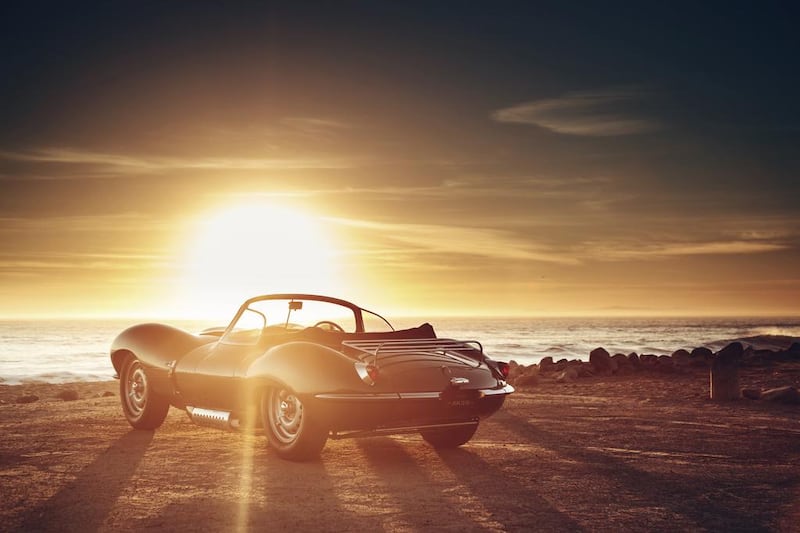Building and selling cars often seems to be a cold and clinical process. A domain where high-tech robots rule, and the cost – down to the last dirham – of every nut and washer is scrupulously scrutinised by the bean counters before being given the green light.
So it’s refreshing to get a first-hand sneak preview of a project such as the Jaguar XKSS, unveiled last month in Los Angeles.
To quickly elaborate, it’s the tale of an epic rebirth. The story goes like this: way back in 1957, Jaguar had set out to create a limited-run model named the XKSS, of which just 25 units were to be built.
Sadly, the Browns Lane factory where they were being handcrafted burnt to the ground. By that point, a meagre 16 cars had been turned out by the facility.
But misfortune sometimes presents opportunities, and in this case it created an opening for Jaguar’s recently established Classic division to build nine “continuation” models that will reprise not only the chassis numbers of the lost originals, but also the exact same build methodology.
Kev Riches, the Jaguar Classic vehicle engineering and recreations manager, explains that starting the XKSS from scratch (as opposed to restoring an existing car) was a painstaking, labour-intensive process.
“We’ve had to unearth all the old drawings, blueprints and even letters that described how the car was built in 1957,” he says.
The XKSS was a predominantly handcrafted car, so Jaguar had to look to some of its veteran staff who still had the know-how to hand-roll aluminium panels and fabricate the numerous bespoke components that go into building the vehicle. That knowledge is now being passed on to a number of young recruits who have been drafted into the Classic division.
“We’re in this for the long haul, so preserving the knowledge well into the future is important,” Riches explains.
There’s an almost fanatical level of attention to detail in preserving the authenticity of the reborn XKSS.
“We didn’t want to merely make a lookalike replica. We wanted to make a true original, especially as some customers are real rivet counters,” Riches says.
“We have digitally scanned four [surviving] cars, so we know exactly how it should look. The cars are not symmetrical, and no two cars are the same. Original cars were about 10 millimetres asymmetrical.”
Although the recreated cars will faithfully retain the imperfections of the oldies, Riches says there will be some small concessions to modern standards.
“The shut lines and panel gaps will be four millimetres all around,” he says. “This certainly wasn’t the case in the original, as you would close the door and it would crash into the sill.”
Surveying the prototype, the aluminium bonnet looks to have been hewn from a single piece of aluminium, but I glean that it’s actually stitched together from 15 pieces. What’s more, the car’s steel backbone has been fabricated using the same laborious bronze-welding process as the 1957 original.
With each car consuming about 7,000 man hours, Riches promises they will ride and handle exactly like the original. They will even leak oil. But before you start reaching for that chequebook, you should know that all nine cars are already spoken for – at more than £1 million (Dh4.6m) a pop. If it makes you feel any better, none of them are road-legal anyway, so their use is restricted to racetracks and show-pony duties at concours events.
Although its sales volumes are obviously minuscule, Jaguar Classic stands to be a lucrative business, given the sizeable margins on each car. No surprise, then, that Riches says the division will soon start eyeing other recreation projects, which could include the XJ13, a stillborn 1960s supercar, of which just a solitary prototype was built. If that happens, expect it to similarly sell out in the blink of an eye.
motoring@thenational.ae





